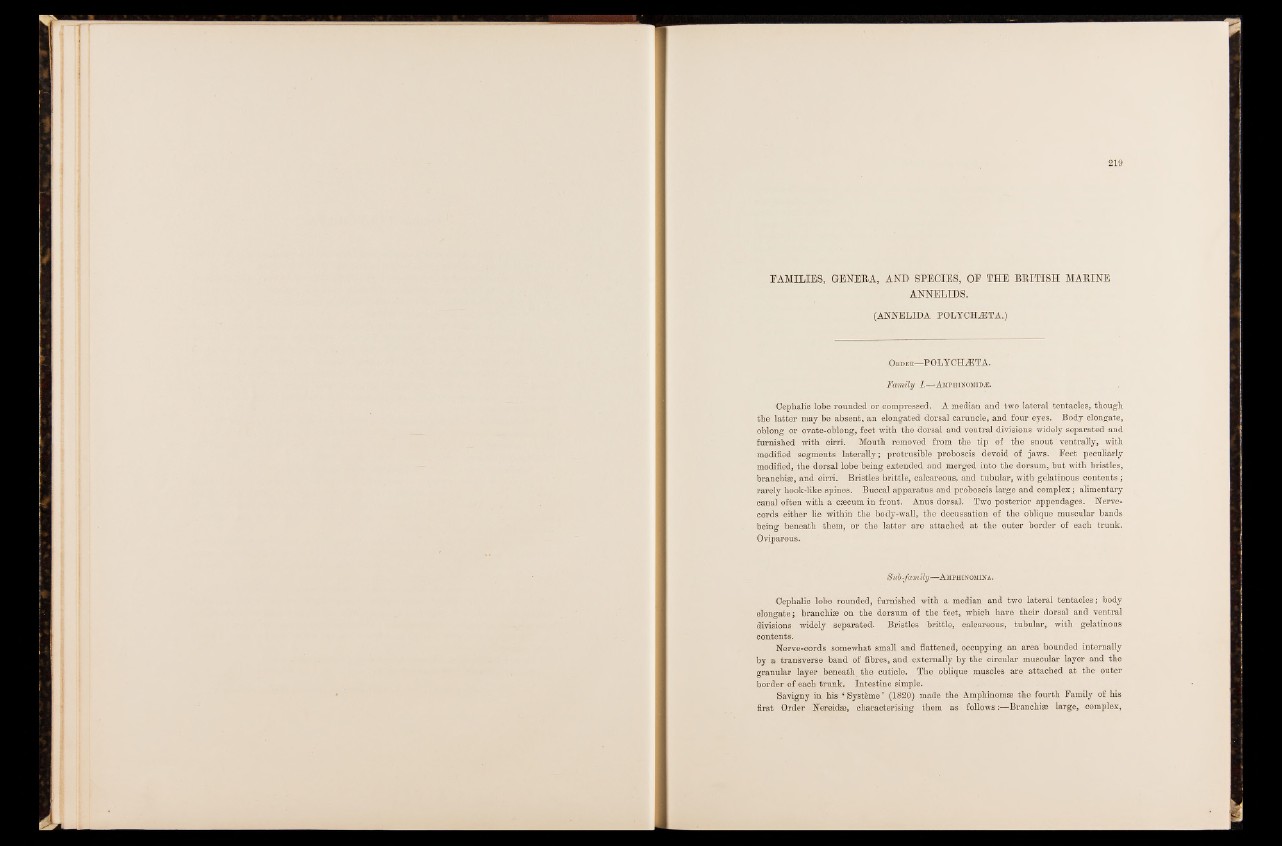
FAMILIES, GENERA, AND SPECIES, OE THE BRITISH MARINE
ANNELIDS.
(ANNELIDA POLYCH^ETA.)
Order—POLY CHÆTA.
Family I.—Amphinomidæ.
Cephalic lobe rounded or compressed. A median and two lateral tentacles, though
the latter may be absent, an elongated dorsal caruncle, and four eyes. Body elongate,
oblong or ovate-oblong, feet with the dorsal and ventral divisions widely separated and
furnished with cirri. Mouth removed from the tip of the snout ' ventrally, with
modified segments laterally; protrusible proboscis devoid of jaws. Feet peculiarly
modified, the dorsal lobe being extended and merged into the dorsum, but with bristles,
branchiæ, and cirri. Bristles brittle, calcareous, and tubular, with gelatinous contents ;
rarely hook-like spines. Buccal apparatus and proboscis large and complex ; alimentary
canal often with a cæcum in front. Anus dorsal. Two posterior appendages. Nerve-
cords either lie within the body-wall, the decussation of the oblique muscular bands
being beneath them, or the latter are attached at the Outer border of each trunk.
Oviparous.
Sub-family—Amphinomina.
Cephalic lobe rounded, furnished with a median and two lateral tentacles; body
elongate; branchiæ on the dorsum of the feet, which have their dorsal and ventral
divisions widely separated. Bristles brittle, calcareous, tubular, with gelatinous
contents.
Nerve-cords somewhat small and flattened, occupying an area' bounded internally
by a transverse band of fibres, and externally by the circular muscular layer and the
granular layer beneath the cuticle. The oblique muscles are attached at the outer
border of each trunk. Intestine simple.
Savigny in his ‘ Système * (1820) made the Amphinomæ the fourth Family of his
first Order Nereidæ, characterising them as follows :■—Branchiæ large, complex,